Arkansas National Guard
The Arkansas National Guard (ARNG), commonly known as the Arkansas Guard, is a component of the Government of Arkansas and the National Guard of the United States. It is composed of Army and Air National Guard units. The adjutant general's office is located at Camp Robinson MTC, North Little Rock.
| Arkansas National Guard | |
|---|---|
 | |
| Active | 1804–present |
| Country | |
| Allegiance | |
| Type | |
| Role | Organized militia Armed forces reserve |
| Size | ~6,500 personnel |
| Part of | Government of Arkansas National Guard of the United States |
| Headquarters | Camp Robinson MTC, North Little Rock, Arkansas |
| Motto(s) | "Arkansas First" |
| Website | arkansas |
| Commanders | |
| Commander in Chief | Governor Sarah Huckabee Sanders |
| Adjutant General of Arkansas | Major General Jonathan M. Stubbs, ARARNG |
| Insignia | |
| Abbreviation | ARNG |
| This article is part of a series on the |
| Arkansas National Guard |
|---|
 |
| Arkansas National Guard |
| Arkansas Army National Guard |
| Arkansas Territorial Militia, (1804–1836) |
| Arkansas Militia, 1836–1879 |
| Arkansas State Guard, 1879–1907 |
| Arkansas State Guard and the Spanish–American War |
| Arkansas National Guard 1907–1949 |
| Arkansas Air National Guard (1946–Present) |
| Arkansas Army National Guard (1949–Present) |
|
| See also |
|
|
Dual missions, state and federal
National Guard units can be mobilized at any time by presidential order to supplement regular armed forces, and upon declaration of a state of emergency by the governor of the state in which they serve. Unlike Army Reserve members, National Guard members cannot be mobilized individually (except through voluntary transfers and Temporary DutY Assignments (TDY)), but only as part of their respective units. However, there have been several individual activations to support military operations since 2001.
Federal mission
When National Guard troops are called to federal service, the President serves as Commander-In-Chief. The federal mission assigned to the National Guard is: "To provide properly trained and equipped units for prompt mobilization for war, National emergency or as otherwise needed."' For much of the final decades of the 20th century, National Guard personnel typically served "one weekend a month, two weeks a year", with a portion working for the Guard in a full-time capacity. The current forces formation plans of the US Army call for the typical National Guard unit (or National Guardsman) to serve one year of active duty for every six years of service. More specifically, current Department of Defense policy is that individual Guardsman will be given 24 months between deployments of no more than 12 months each.
During the Little Rock School Crisis in 1957, President Eisenhower issued Executive Order 10730,[1] which placed the Arkansas National Guard under Federal control. As of February 2023, the Executive Order 10730 has not been revoked.[2]
State mission
The Governor may call individuals or units of the Arkansas National Guard into state service during emergencies or to assist in special situations which lend themselves to use of the National Guard. The state mission assigned to the National Guard is: "To provide trained and disciplined forces for domestic emergencies or as otherwise provided by state law." When not activated for its Federal mission, the Governor through the State Adjutant General commands Guard forces. The Governor can call the Guard into action during local or statewide emergencies, such as storms, drought, and civil disturbances, to name a few.[3]
Military support to civilian authorities (MSCA)
Upon the request of either the judge or sheriff of a county or the mayor of a city... ...whenever it is made to appear to the Governor that there is a breach of the peace, riot, resistance to process of this State, or disaster or imminent danger thereof... ...the Governor may order into the active service of the state... ...for such period, and to such extent, and in such manner as he may deem necessary, all or any part of the organized militia.[4]
The intent is that the National Guard is called only when civilian resources have been used first and fully exhausted. While in this status, Guard units report only to military authorities, Guard Authorities do not replace Civilian Authorities. The use of the National Guard is intended as a temporary measure to prevent the loss of life or damage to property.
Examples of MSCA missions conducted in state active duty status
When Tornados hit Dumas, Arkansas, on Saturday, February 24, 2007 the Arkansas National Guard deployed 130 Soldiers to conduct the following missions:[5]
- Security operations
- Prevention of looting
- Curfew enforcement
- Power generation
In 2009 the Arkansas National Guard conducted over 101 MSCA missions, including:[6]
- Texas wildfires
- Major ice storm – 81 missions
- Mena tornado
- Water purification to support the town of Dierks, Arkansas
- H1N1 flu vaccinations
The types of missions that the Arkansas National Guard conducted in 2009 included:[6]
- Power generation
- Emergency shelter
- Cots and blankets
- County disaster response teams (search and rescue, route clearance, debris removal)
- Water provision
Examples of MSCA provided in a Title 32 status
.jpg.webp)
The National Guard may also respond to natural disasters and other domestic operations in a Title 32 status. In this situation, the Guard is still under the direct command and control of the Governor, but the Federal Government provides the funding through Title 32 of the United States Code.
Hurricane Katrina
The Governor of Arkansas initially activated troops in a state active duty status in response to an Emergency Management Assistance Compact (EMAC) request from the Governor of Louisiana. EMAC provides mutual aid across state lines, provides assets for states' personnel and equipment shortfalls, places responding assets under operational control of requesting governor and the Federal Emergency Management Agency (FEMA) recognizes cross-state support as reimbursable.
The Arkansas National Guard provided the first guard units from outside Louisiana to respond to the Louisiana Governor's request for support when the 77th Theater Aviation Brigade deployed assets to New Orleans. A total of 3000 Arkansas National Guard Soldiers and Airmen were mobilized, with 1500 deployed to Louisiana at the peak of operations. The Arkansas National Guard assisted with processing over 10,000 evacuees through the Chaffee Maneuver Training Center (Fort Chaffee) at Fort Smith Arkansas. Arkansas National Guard units were among the last to leave Louisiana, finally handing off its missions to the Louisiana National Guard in February 2006.[7]
Operation Jump Start
When President Bush ordered National Guard Troops to help secure the border with Mexico, the Arkansas National Guard responded with a Joint Task Force of Soldiers and Airmen, operating in Texas, New Mexico and Arizona. At its peak, Arkansas had over 230 Arkansas troops and airmen on orders including:
- Arizona – 23 Airmen from the 188th Fighter Wing and 189th Air Lift Wing
- New Mexico – 137 from 39th Infantry Brigade Combat Team and 87th Troop Command, ans 1 Airman from 188th Fighter Wing
- Texas – 53 from the 77th Theater Aviation Brigade
- Arkansas – 19 support personnel at the state Joint Operations Center and the Joint Forces Headquarters
State military facilities
The Arkansas National Guard operates over 70 National Guard Readiness Centers (traditionally referred to as Armories) in 55 Arkansas Counties. The state also maintains two Maneuver Training Centers, Chaffee Maneuver Training Center at Fort Smith, Arkansas, and Camp Robinson Maneuver Training Center at North Little Rock, Arkansas.
Fort Chaffee Maneuver Training Center
The Chaffee Maneuver Training Center (Fort Chaffee) encompasses over 65,000 acres, large enough to support Brigade size training exercises, or up to approximately 7000 soldiers. Acreage available to support Field Artillery training as well as various small arms training ranges. A recent addition to Fort Chaffee is the convoy live fire range to meet the latest training requirement of the Global War On Terrorism. Fort Chaffee became a center for processing hurricane evacuees, providing shelter and relief to over 10,000 Citizens of Louisiana during Hurricanes Katrina and Rita.
Camp Robinson Maneuver Training Center
The Camp Robinson Maneuver Training Center (Camp Joseph T, Robinson) is a 32,000 Acre facility located at North Little Rock, Arkansas, which houses the Joint Forces Headquarters, Arkansas National Guard, the Headquarters, Arkansas Air National Guard, Headquarters, 77th Combat Aviation Brigade, Headquarters, 87th Troop Command, and is home to 3 Premier Training Centers, the National Guard Professional Education Center (PEC), the Guard Marksmanship Training Center (NGMTC) and the 233rd Regional Training Institute.
Manpower
As of 2009, the Arkansas National Guard Consisted of 10,582 Soldiers and Airmen. 8,750 of these Soldiers and Airmen are considered traditional members, meaning that they are required to drill at least one weekend per month and 2 weeks per year, but often work more. The Arkansas National Guard is supported by 1,836 full-time federal military employees and an additional 545 full-time state civilian employees.
State Military Department
The Arkansas State Military Department supports the Arkansas Guard by providing responsible fiscal, administrative, nursing, security, youth service, family support, natural resource conservation, recycling, waste water, public affairs, legal, museum, fire, police officers, skilled trades, and trained professional staff that will ensure well-maintained armories, facilities, training, and personnel administration for the National Guard.
Youth programs
The Arkansas National Guard Operates two programs to assist at-risk youth.
Youth Challenge
The Arkansas National Guard Youth Challenge program is a 22-week residential program for at-risk youth ages 16–19. In 2009 the program graduated 109 cadets. Of that number 71 earned a GED or a high school diploma. Twelve graduates of the program joined the military and six enrolled in college. The Cadets perform community service at numerous events, such as the Arkansas Susan G. Komen Race for the Cure against breast cancer.[8]
Civilian Student Training Program
Civilian Student Training Program is a state funded program that provides a structured, discipline base and military style, behavior modification environment. the program accepts adjudicated male nonviolent offenders ranging in age from 13 to 17. The nine-week residential multi-phase program stresses value-based learning, physical fitness, academic and life skills education, and community service. The program was proposed by the Arkansas National Guard and established by the state legislature in 1993. All participants are enrolled under court order. The program has graduated over 5,000 since its inception. The academic grade level increased of graduates increases by an average of 2.5 years. Over 25,000 hours of community service has been performed by CSTP graduates.[8]
Economic impact
The Arkansas National Guard's total operating budget for FY 2008 was, $244.8 million; of that, the federal government provided $232.4 million and the State of Arkansas provided $12.3 million in fiscal year 2008. There were also federal military construction projects related to the Arkansas National Guard totaling $83 million in fiscal year 2008.[9]
| County | City | Impact |
|---|---|---|
| Arkansas | City | $1,269,979 |
| Ashley | Crossett | $714,035 |
| Baxter | Mountain Home | $1,203,954 |
| Benton | Bentonville | $921,755 |
| Benton | Siloam Springs | $842,348 |
| Benton | Rogers | $855,546 |
| Boone | Harrison | $2,265.463 |
| Bradley | Warren | $3,435,145 |
| Carroll | Berryville | $674,586 |
| Clark | Arkadelphia | $708,266 |
| Clay | Rector | $1,340,758 |
| Cleburne | Heber Springs | $1,130,293 |
| Columbia | Magnolia | $1,466,699 |
| Craighead | Jonesboro | $4,308,507 |
| Crittenden | West Memphis | $909,426 |
| Cross | Wynne | $23,320 |
| Dallas | Fordyce | $589,634 |
| Desha | Dumas | $1,285,005 |
| Drew | Monticello | $1,296,634 |
| Faulkner | Conway | $1,666,875 |
| Franklin | Ozark | $869,503 |
| Franklin | Charleston | $988,245 |
| Garland | Hot Springs | $3,159,283 |
| Greene | Paragould | $1,400,640 |
| Hempstead | Hope | $700,683 |
| Hot Springs | Malvern | $2,868,561 |
| Independence | Batesville | $1,039,968 |
| Jackson | Newport | $1,286,802 |
| Jefferson | Pine Bluff | $3,762,741 |
| Johnson | Clarksville | $1,031,235 |
| Lawrence | Walnut Ridge | $625,606 |
| Logan | Booneville | $1,645,150 |
| Logan | Paris | $1,030,461 |
| Lonoke | Lonoke | $605,157 |
| Lonoke | Cabot | $513,329 |
| Miller | Texarkana | $679,858 |
| Mississippi | Blytheville | $846,821 |
| Monroe | Brinkley | $658,596 |
| Nevada | Prescott | $611,455 |
| Ouachita | Camden | $705,243 |
| Perry | Perryville | $561,727 |
| Phillips | West Helena | $1,890,242 |
| Poinsett | Harrisburg | $711,870 |
| Poinsett | Marked Tree | $1,387,015 |
| Polk | Mena | $641,656 |
| Pope | Russellville | $3,539,263 |
| Prairie | Hazen | $1,926,785 |
| Pulaski | Little Rock | $3,183,860 |
| Pulaski | North Little Rock | $103,632,033 |
| Pulaski | Little Rock Air Force Base | $26,663,208 |
| Saline | Benton | $1,416,622 |
| Searcy | Marshall | $860,222 |
| Sebastian | Fort Smith | $34,664,749 |
| Sevier | DeQueen | $688,250 |
| St Francis | Forrest City | $709,944 |
| Union | El Dorado | $631,499 |
| Washington | Fayetteville | $3,930,279 |
| Washington | Lincoln | $739,739 |
| Washington | Springdale | $928,628 |
| White | Beebe | $650,411 |
| White | Searcy | $3,038,279 |
| Woodruff | Augusta | $432,097 |
| Yell | Dardanelle | $893,552 |
| Yell | Danville | $637,648 |
History
The Arkansas National Guard traces its roots to the creation of the Territorial Militia in 1804. Interest in the Militia in Arkansas generally waxed and waned throughout the 19th century as various national emergencies arose and passed. Arkansas provided troops for the War with Mexico, the American Civil War, and the Spanish–American War during the 19th century. In each case, in answer to the governor's call, local militia companies would turn out and be formed into regiments or battalions for induction into federal service. The militia was also heavily engaged in the violence that characterized the Reconstruction period following the Civil War.
Interest in the militia or Arkansas State Guard as it was known following reconstruction, ebbed and flowed throughout the 19th century, increasing just before or major conflicts, but diminishing in between. Most militia activity was at the local, county and city level, and was often provided for with private funds. It was only late in the 19th century, in the preparations for the Spanish–American War that the State Guard, as it was known then, truly came into existence as a stable organized force.
Following the Spanish–American War, the Arkansas State Guard, along with the militia forces of all other states, was reorganized as the Arkansas National Guard. With the reorganization came the first nationally directed training and increased funding. During World War I, units were stripped of their state designations and were given federal designations upon mustering into federal service. The National Guard saw a massive expansion and increased funding and training following World War I. A similar increase was seen after World War II. Following World War II, the air component was separated into the Arkansas Air National Guard. Both the air and land components of the Arkansas National Guard supplied forces for the Korean War. In 1967 during a nationwide reorganization of National Guard Units, the Arkansas Army National Guard took on most of its current force structure with one Infantry Brigade, One Field Artillery Brigade, Aviation units, and various Separate Companies under the Troop Command. Arkansas units have served in every major conflict since the Seminole War, with the exception of Vietnam. Arkansas Army and Air units remain fully engaged in the ongoing Global War on Terrorism.
Throughout its service to the nation during times of war, the Arkansas National Guard has continued to perform its role of providing service to the citizens of the state during times of disaster. The Guard has responded to numerous tornadoes, floods and fires, in addition to being called upon to provide security and quell violence in times of civil disturbance. The Guard has also provided support to neighboring states, most notably Louisiana during Hurricanes Katrina, Rita and Ike.
The history of the Arkansas National Guard is divided into the following time periods:
- Arkansas Territorial Militia 1804–1836
- Arkansas Militia and the War with Mexico, 1836–1847
- Arkansas Militia in the Civil War, 1848–1865
- Arkansas Militia in Reconstruction, 1865–1879
- Arkansas State Guard and the Spanish–American War, 1879–1900
- Arkansas National Guard during World War I, 1900–1919
- Arkansas National Guard and World War II, 1920–1945
- Arkansas Air National Guard, 1949–present
- Arkansas Army National Guard and the Korean War, 1949–1954
- Arkansas Army National Guard and the Cold War, 1954–1989
- Arkansas National Guard and the Integration of Central High School, 1957
- Arkansas Army National Guard in Operation Desert Storm, 1990–1991
- Arkansas Army National Guard and the Global War on Terrorism, 1992–present
- Arkansas Air National Guard, 1949–present
List of adjutants general
 Col. A. P. Spencer, 1819–1823
Col. A. P. Spencer, 1819–1823 Col. Terrence Farrelly, 1823–1825
Col. Terrence Farrelly, 1823–1825 Col. Benjamin Desha, 1826–1828
Col. Benjamin Desha, 1826–1828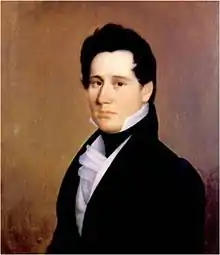 Col. Wharton Rector, Jr., 1828–1832
Col. Wharton Rector, Jr., 1828–1832 Col. Archibald Yell, 1832–1833
Col. Archibald Yell, 1832–1833 Col. William Field, 1833–1835
Col. William Field, 1833–1835 Col. Wharton Rector, Jr., 1835–1836
Col. Wharton Rector, Jr., 1835–1836 Col. Daniel T. Witter, 1836-1836
Col. Daniel T. Witter, 1836-1836 Col. John N. Boyle, 1836–1837
Col. John N. Boyle, 1836–1837 Col. William B. Conway, 1837–1838
Col. William B. Conway, 1837–1838 Col. Samuel H. Hempstead, 1838–1845
Col. Samuel H. Hempstead, 1838–1845 Col. Albert Pike, 1845–1846
Col. Albert Pike, 1845–1846 Col. Solon Borland, 1846–1848
Col. Solon Borland, 1846–1848 Col. John S. Roane, 1848–1849
Col. John S. Roane, 1848–1849 Col. Allan Wood, 1849–1851
Col. Allan Wood, 1849–1851 Col. John Hutt, 1853–1860
Col. John Hutt, 1853–1860 Col. Edmund Burgevin, 1861–1862
Col. Edmund Burgevin, 1861–1862 Col. Gordon N. Peay, 1863–1864
Col. Gordon N. Peay, 1863–1864 Col. C. A. Henry, 1864-1864
Col. C. A. Henry, 1864-1864 Col. F. M. Sams, 1864-1864
Col. F. M. Sams, 1864-1864 Brig. Gen. Albert W. Bishop, 1864–1868
Brig. Gen. Albert W. Bishop, 1864–1868 Keyes Danforth, 1868–1873
Keyes Danforth, 1868–1873 Frank Strong, 1873–1874
Frank Strong, 1873–1874 M. McCananny, 1874-1874
M. McCananny, 1874-1874 Charles H. Woods, 1874–1877
Charles H. Woods, 1874–1877 James Pomeroy, 1877–1881
James Pomeroy, 1877–1881 Sam J. Churchill, 1881–1882
Sam J. Churchill, 1881–1882 James F. Reed, 1883-1883
James F. Reed, 1883-1883 L. H. McGill, 1883–1884
L. H. McGill, 1883–1884 W. H. Langford, 1884–1885
W. H. Langford, 1884–1885 W. B. Hughes, 1885–1889
W. B. Hughes, 1885–1889 John C. England, 1889–1891
John C. England, 1889–1891 A. W. Giles, 1891-1891
A. W. Giles, 1891-1891 Kie Oldham, 1891–1897
Kie Oldham, 1891–1897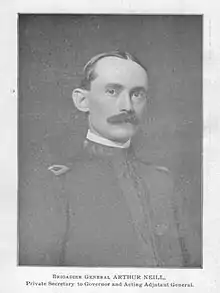 Brig. Gen. Arthur Neill, 1897–1900
Brig. Gen. Arthur Neill, 1897–1900 Brig. Gen. Charles Jacobson, 1901–1907
Brig. Gen. Charles Jacobson, 1901–1907 Brig. Gen. Paul Little, 1907–1909
Brig. Gen. Paul Little, 1907–1909 Brig. Gen. Benjamin W. Green, 1909–1913
Brig. Gen. Benjamin W. Green, 1909–1913 Brig. Gen. Lloyd England, 1913–1919
Brig. Gen. Lloyd England, 1913–1919 Brig. Gen. Joe S. Harris, 1919–1921
Brig. Gen. Joe S. Harris, 1919–1921 Brig. Gen. Virgil A. Beeson, 1921–1922
Brig. Gen. Virgil A. Beeson, 1921–1922 Brig. Gen. Heber L. McAlister, 1922–1925
Brig. Gen. Heber L. McAlister, 1922–1925 Brig. Gen. James R Wayne, 1925–1927
Brig. Gen. James R Wayne, 1925–1927 Brig. Gen. Joe S. Harris, 1927–1929
Brig. Gen. Joe S. Harris, 1927–1929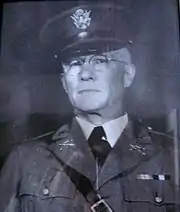 Brig. Gen. Ebenezer L. Compere, 1929–1937
Brig. Gen. Ebenezer L. Compere, 1929–1937 Brig. Gen. Daniel B. Byrd, 1937–1941
Brig. Gen. Daniel B. Byrd, 1937–1941 Brig. Gen. Ebenezer L. Compere, 1941–1945
Brig. Gen. Ebenezer L. Compere, 1941–1945 Brig. Gen. Heber L. McAlister, 1945–1949
Brig. Gen. Heber L. McAlister, 1945–1949 Brig. Gen. Earl Ricks, 1949–1950
Brig. Gen. Earl Ricks, 1949–1950 Brig. Gen. Heber L. McAlister, 1950–1951
Brig. Gen. Heber L. McAlister, 1950–1951 Brig. Gen. John B. Morris, Jr., 1951–1953
Brig. Gen. John B. Morris, Jr., 1951–1953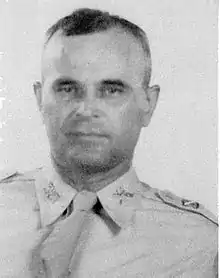 Maj. Gen. Lucien Abraham, 1953–1955
Maj. Gen. Lucien Abraham, 1953–1955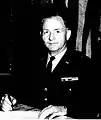 Maj. Gen. Sherman T. Clinger, 1955–1966
Maj. Gen. Sherman T. Clinger, 1955–1966 Maj. Gen. Charles H. Wilson, 1967–1970
Maj. Gen. Charles H. Wilson, 1967–1970 Maj. Gen. Thomas M. Phillips, 1971–1973
Maj. Gen. Thomas M. Phillips, 1971–1973 Maj. Gen. oseph R. Chappell, Jr., 1973–1975
Maj. Gen. oseph R. Chappell, Jr., 1973–1975 Maj. Gen. Thomas C. Armstrong, 1975–1979
Maj. Gen. Thomas C. Armstrong, 1975–1979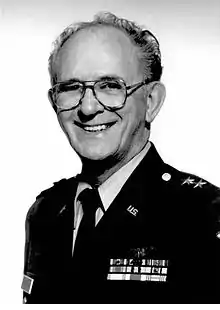 Maj. Gen. James H. Jones, 1979–1981
Maj. Gen. James H. Jones, 1979–1981 Maj. Gen. Harold L. Gwatney, 1981–1983
Maj. Gen. Harold L. Gwatney, 1981–1983 Maj. Gen. Fred M. Carter, 1984–1986
Maj. Gen. Fred M. Carter, 1984–1986 Maj. Gen. James A. Ryan, 1986–1993
Maj. Gen. James A. Ryan, 1986–1993 Maj. Gen. Melvin C. Thrash, 1993–1996
Maj. Gen. Melvin C. Thrash, 1993–1996 Maj. Gen. Don C. Morrow, 1996–2006
Maj. Gen. Don C. Morrow, 1996–2006 Maj. Gen. Ronald S. Chastain, 2006–2007
Maj. Gen. Ronald S. Chastain, 2006–2007 Maj. Gen. William D. Wofford, 2007–2015
Maj. Gen. William D. Wofford, 2007–2015 Maj. Gen. Mark H. Berry, 2015–2019
Maj. Gen. Mark H. Berry, 2015–2019.jpg.webp) Maj. Gen. Kendall W. Penn, 2019–present
Maj. Gen. Kendall W. Penn, 2019–present
References
- Exec. Order No. 10730 (1957 September 24)
- "Executive Orders Disposition Tables: 1957". National Archives. 15 August 2016. Retrieved 7 February 2023.
- "Archived copy". Archived from the original on 2013-03-20. Retrieved 2013-03-25.
{{cite web}}: CS1 maint: archived copy as title (link) - Arkansas Code Annotated 12-61-111(b)
- Arkansas. (2007). Military Department of Arkansas annual report. Robinson Maneuver Training Center, North Little Rock, Ark: Military Dept. of Arkansas, page 18
- Arkansas. (2009). Military Department of Arkansas annual report. Robinson Maneuver Training Center, North Little Rock, Ark: Military Dept. of Arkansas, page 18
- Arkansas. (2006). Military Department of Arkansas annual report. Camp Robinson, North Little Rock, Ark: Military Dept. of Arkansas, page 18
- Arkansas. (2009). Military Department of Arkansas annual report. Robinson Maneuver Training Center, North Little Rock, Ark: Military Dept. of Arkansas, page 30
- Arkansas. (2008). Military Department of Arkansas annual report. Robinson Maneuver Training Center, North Little Rock, Ark: Military Department of Arkansas, page 25

